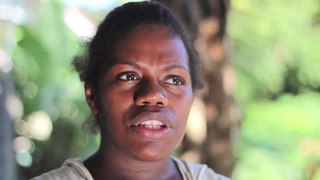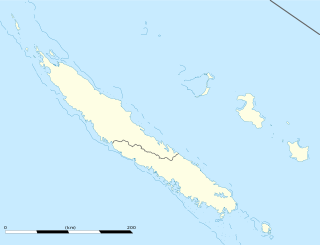Related Research Articles
Hawaiian is a Polynesian language of the Austronesian language family that takes its name from Hawaiʻi, the largest island in the tropical North Pacific archipelago where it developed. Hawaiian, along with English, is an official language of the US state of Hawaii. King Kamehameha III established the first Hawaiian-language constitution in 1839 and 1840.
A pidgin, or pidgin language, is a grammatically simplified means of communication that develops between two or more groups of people that do not have a language in common: typically, its vocabulary and grammar are limited and often drawn from several languages. It is most commonly employed in situations such as trade, or where both groups speak languages different from the language of the country in which they reside. Linguists do not typically consider pidgins as full or complete languages.

Tok Pisin, often referred to by English speakers as New Guinea Pidgin or simply Pidgin, is a creole language spoken throughout Papua New Guinea. It is an official language of Papua New Guinea and the most widely used language in the country. However, in parts of the southern provinces of Western, Gulf, Central, Oro, and Milne Bay, the use of Tok Pisin has a shorter history and is less universal, especially among older people.

Bislama is an English-based creole language and one of the official languages of Vanuatu. It is the first language of many of the "Urban ni-Vanuatu" and the second language of much of the rest of the country's residents. The lyrics of "Yumi, Yumi, Yumi", the country's national anthem, are composed in Bislama.
Liberian English refers to the varieties of English spoken in Liberia. There are four such varieties:
Hawaiian Pidgin is an English-based creole language spoken in Hawaiʻi. An estimated 600,000 residents of Hawaiʻi speak Hawaiian Pidgin natively and 400,000 speak it as a second language. Although English and Hawaiian are the two official languages of the state of Hawaiʻi, Hawaiian Pidgin is spoken by many Hawaiian residents in everyday conversation and is often used in advertising targeted toward locals in Hawaiʻi. In the Hawaiian language, it is called ʻōlelo paʻi ʻai – "hard taro language". Hawaiian Pidgin was first recognized as a language by the U.S. Census Bureau in 2015. However, Hawaiian Pidgin is still thought of as lower status than the Hawaiian and English languages.

Portuguese creoles are creole languages which have Portuguese as their substantial lexifier. The most widely-spoken creoles influenced by Portuguese are Cape Verdean Creole, Guinea-Bissau Creole and Papiamento.
A modal verb is a type of verb that contextually indicates a modality such as a likelihood, ability, permission, request, capacity, suggestion, order, obligation, necessity, possibility or advice. Modal verbs generally accompany the base (infinitive) form of another verb having semantic content. In English, the modal verbs commonly used are can, could, may, might, shall, should, will, would, ought to, used to and dare.
Sri Lanka Indo-Portuguese, Ceylonese Portuguese Creole or Sri Lankan Portuguese Creole (SLPC) is a language spoken in Sri Lanka. While the predominant languages of the island are Sinhala and Tamil, the interaction of the Portuguese and the Sri Lankans led to the evolution of a new language, Sri Lanka Portuguese Creole (SLPC), which flourished as a lingua franca on the island for over 350 years (16th to mid-19th centuries). SLPC continues to be spoken by an unknown number of Sri Lankans, estimated to be extremely small.

Belizean Creole is an English-based creole language spoken by the Belizean Creole people. It is closely related to Miskito Coastal Creole, San Andrés-Providencia Creole, and Jamaican Patois.
An Arabic-based creole language, or simply Arabic creole is a creole language which was significantly influenced by the Arabic language.

A French creole, or French-based creole language, is a creole for which French is the lexifier. Most often this lexifier is not modern French but rather a 17th- or 18th-century koiné of French from Paris, the French Atlantic harbors, and the nascent French colonies. This article also contains information on French pidgin languages, contact languages that lack native speakers.
Japanese Pidgin English is any of several English-based pidgins spoken or influenced by the Japanese.
The language bioprogram theory or language bioprogram hypothesis (LBH) is a theory arguing that the structural similarities between different creole languages cannot be solely attributed to their superstrate and substrate languages. As articulated mostly by Derek Bickerton, creolization occurs when the linguistic exposure of children in a community consists solely of a highly unstructured pidgin; these children use their innate language capacity to transform the pidgin, which characteristically has high syntactic variability, into a language with a highly structured grammar. As this capacity is universal, the grammars of these new languages have many similarities.

Tayo, also known as "patois de Saint-Louis", is a French-based Creole spoken in New Caledonia. It is spoken by about 3000 people in the village of Saint-Louis, about 15 km (9.3 mi) from the New Caledonian capital Nouméa. The language developed out of the contact of speakers of many different Kanak languages in the mission, and the use of French for official purposes and as the language of prestige. The language contains structural elements primarily from Melanesian languages and lexical elements mainly from French.

Native languages of Oceania fall into three major geographic groups:
Bonin English, or the Bonin Islands language, is an English-based creole of the Ogasawara Islands south of Japan with strong Japanese influence, to the extent that it has been called a mixture of English and Japanese.
Port Jackson Pidgin English or New South Wales Pidgin English is an English-based pidgin that originated in the region of Sydney and Newcastle in New South Wales in the early days of colonisation. Stockmen carried it west and north as they expanded across Australia. It subsequently died out in most of the country, but was creolised in the Northern Territory at the Roper River Mission (Ngukurr), where missionaries provided a safe place for Indigenous Australians from the surrounding areas to escape deprivation at the hands of European settlers. As the Indigenous Australians who came to seek refuge at Roper River came from different language backgrounds, there grew a need for a shared communication system to develop, and it was this that created the conditions for Port Jackson Pidgin English to become fleshed out into a full language, Kriol, based on English language and the eight different Australian language groups spoken by those at the mission.
References
- This article incorporates material from the Citizendium article "Pidgin Hawaiian", which is licensed under the Creative Commons Attribution-ShareAlike 3.0 Unported License but not under the GFDL.